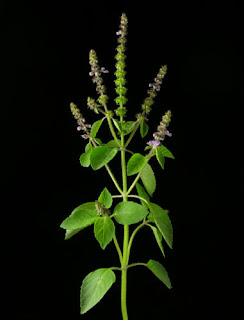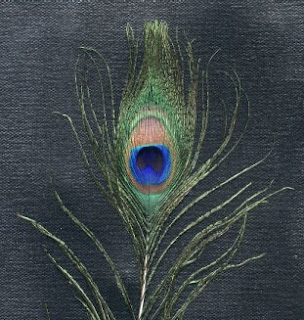Friday, July 24, 2009
importance of 108
There are 12 rasi (sun signs) of 30 degrees each in the zodiac. These rasi are connected to the Adityas (12 Sun gods) and the rasi are said to give the results of the Sun. The Sun is karaka (significator) for the 1st and the houses 9th houses. When you take each rasi and divide it into nine amsas (divisions) it creates the Navamsa (9th divisional chart). 30 degrees divided by nine gives 9 signs of 3 degrees and 20 minutes each. With each of the 12 signs containing 9 amsas there is 108 amsas. This Navamsa shows the inherent qualities of the soul, a native’s dharma (purpose), bhagya (luck), and one’s spouse. The Navamsa is the 108 sign chart held in high esteem in Vedic astrology and a Vedic astrologer doesn’t read a birth chart without the navamsa sitting next to it.
The Moon goes through the zodiac in approximately 27 days which creates the lunar zodiac called the nakshatras. The Moon is karaka (significator) for the 4th house. Each of these 27 lunar signs are divided into 4 amsas (divisions) called padas (feet/footsteps). The nakshatras (lunar signs) are 13-20 degrees and divided by four become 3-20 degrees. 27 nakshatras multiplied by 4 padas is 108. The four pada relate to the four ayana: karma (career), artha (sustenance), kama (pleasure/family), moksa (spirituality/liberation). Each pada has a tone, using which can activate a planet within the tone. The Moon has a 108 padas and 108 tones.
The 3-20 division reveals itself as the most crucial division. The Moon sign’s padas and the Sun sign’s navamsas line up with the number 108. 108 is the number where the Moon (manas) and Sun (atman/ahamkar) line up. It is where the Moon’s cycle can be aligned with the Sun’s cycle. 108 is a number that aligns the mind and the soul.
The 3-20 division aligns the Sun and the Moon, which also shows the alignment of Shiva and Parvati or the Purusha and Prakritti. The 108 division is the coming together of Purusha and Prakritti, it is the creation of the world.
The Sun and the Moon are connected to the earth by approximately 108 times their own diameters. When you look at the Sun and the Moon from earth they are perceived as the same size, this same size appears because of their distance. In the zodiac the large solar signs (rasis) find the same size as the smaller lunar signs (nakshatras) with the number 108. Even though the Sun (1,392,000 km ) is 400 times smaller than the Moon (3,474.8 km), they are perceived the same by their division of 108 times their own diameter. This just physically reveals that the Purusha (Sun) and Prakritti (Moon) are using the vibration of 108 to create and maintain life as it is on this earth. 108 is not sacred because of this distance, this distance (of a 108 the luminaries own diameter) are existing because it is the vibration in which all life as we know it is brought into existence.
It is the vibration of the Purusha and Prakritti that has put us into existence and it is the secret key that will allow us to awaken in our existence, manipulate our existence, or transcend our existence. It is a powerful force that can do anything, tantra (both positive and negative) taps into this force. There are a 108 beads upon a mala to tap into this vibration of the supreme creative force of the god and goddess, Purusha and Prakritti.
All other lists of 108 unfold from Purusha (Sun) and Prakritti (Moon). For example, in Ayurveda there are a 108 marmas in the body. They are points that can heal or kill a living being. They are considered the points where consciousness connects to the body, where Purusha (consciousness) is brought into Prakritti (body) to give life to the living being (both humans and animals have these points). The 108 intersections on the Sri Chakra again relate to this numbers ability invoke the balance of Purusha and Prakritti and the primordial ability of the rishi to see both clearly.
In linear time Prakritti (manifest creation) came forth from the Purusha (the absolute beyond anything created). It is a point from which all came into being. In non-linear time, this point is always present where the ‘nothing’ and the ‘something’ connect beyond words. This space is 108.
Wednesday, July 22, 2009
Monday, July 13, 2009
Panchagni
 pANCHAGNI Ayurveda Marma Hospital
pANCHAGNI Ayurveda Marma Hospitalperrumkulam
i.s building
varkala
kerala


PANCHAGNI
The fire is the eternal purifier. All other elements are prone tocontamination, except fire. Fire burns everything and converts them intoashes. Water, earth or air can be contaminated, while fire cannot be.Cleansing by fire is considered to be much more powerful and effective thancleansing by water. This is why along with offerings of various materialsfor various deities, the effect of cleansing with fire through their aurawas experienced by people who performs fire rituals such as Agni hotra,Yajna or Yaga. Fire is the element that helps our digestion too. (I am born in the fire of passion) Fire is also associated as the cause for emotions such as Anger,passion,greed etc.
Panchagni literally means five fires. People used to do repentance (Prayaschitta) or cleansing through five fires; four fires lit by us and the Sun as the fifth.. This means endurance and cleansing the conscience. Agni is the link between heaven and earth. The Mooladhara chakra that signifies the earth and the Sahasrara chakra, that signifies heaven is linked through Agni. Agni or fire always has its flames upwards. This is the motion of kundalini energy also. Kundalini energy when it goes through the fire of Agni, gets elevated to Sahasrara.
Agni burns everything that comes its way and elavates them or moves them upwards. Only ash remains on the earth. Ash represents elements or gross in this context. Sita, the Sakti element, went through agni pariksha (test by fire) beforeshe got united with Rama, the pure consciousness. Thus, Sakti or Sita whowas tested and tempted by ten headed Raavan (indicative of the five Jnanendriyas and five karmendriyas (five senses or perception and five senses of action – thus 10 heads of our daily temptation), had to cleanse herself in fire before she could reach Rama, the pure consciousness. Similarly, gross needs to be purified in fire to attain the pure energy. Kundalini rising up to Sahasrara, and Sita attaining Rama are all the same in this context. Pure consciousness did not come down. Sakti had to go up and meet Rama and heavy cleansing must occur before that meeting can happen.
The fundamental need for performing fire purification is Faith. Faith is thekey. Faith intensifies purification. Faith will create Devotion. Unfailingdevotion. This makes the transit easy for Sita to reach Rama. The elevationalso means elevation in Gunas. Tamas goes through Rajas and becomes Satwa.Thus elimination of Tamas and attainment of Satwa through an action which isRajas can be compared to Ravana – the dark element Tamas, Sita the seeker and Rama then sought fire as the vehicle. Sita got released from the clutches of Ravana – kundalini gets liberated through sadhana and moves up through sushumna. Fire purifies Sita and Rama who has no Gunas, accepts Sita.
Kundalini Sakti transcends Gunas and attains Shiva, the pure consciousness. This means Moksha, salvation. Thus “Tamaso Ma Jyothirgamaya” ( From darkness to brightness) or from bondage to liberation is the same matter. Tamas is darkness or inertia. Light is liberation or Satwa Guna or even a state with no Gunas. Elevation is the key.
Manipura Chakra is the seat of Agni Tattwa. This is why we say Agni is in the Middle. This is the same agni that aids digestion of food etc. When Kundalini Sakti moves up through Manipura, located at the stomach centre, its purification through agni takes place. This is why, we often do the intense humming or AUM chanting based on Stomach centre, before meditation. This intensifies the agni element in the seeker. This helps purification faster. Cleansing becomes more powerful. Kundalini has to break through the Agni andreach Sahasrara or go back to its old form.
Hanumanji burned the prestigious Lanka of Ravan. He infact burned the ego ofRavan. When ego is hurt the immediate reaction is violence. The mind becomesviolent. When mind becomes vioent, buddhi or vivek (intellect or wisdom) disappears. Ego and emotion destroys the man. The same destroyed Raavan. Hanuman’s power was unfailing devotion to pure consciousness, Rama. Sita wasalso craving to achieve Rama. Again, Agni played his role. We can even say that Agni became the the vehicle of Hanuman.
Ego torments a saint to some extent , even in Savikalpa Samadhi state. It keeps tormenting till he attains Nirvikalpa Samadhi state. Some saints opt for Panchagni Meditation to overcome this aspect of terrestrial binding. In Kathopanishad, Yama attributes three fold fire to Nachiketas, in recognition of his sincere seekership. They are Dhyaan (Meditation) , Daan (Charity) and Tapas (Austerity).
So, panchagni is four fires lit plus the fre from one sun. This is a test for purification. This is conducted either in Uttaraayan (Makar-Sankranti – Mid January) or Dashinaayan (Karka Sankranti- Mid July). The panchagni or five external fires is used for cleaning five internal fires such as passion, anger,greed, attachment and jealousy. The purpose is praayaschittha – repentance.This is also called Pashupati Vratha, dedicated to the supreme saint Shiva. The panchagni during Uttaraayan triggers light and liberation for the soul. Dakshinaayan denotes rebirth and return to life on earth. Uttaraayan helps the soul to leave the terrestrial clutches and hence the Great Bhishma chose his exit at that time
Friday, July 10, 2009
nadis


Tantra and Kundalini Yoga
Nadis
In addition to the seven chakras of the subtle body, the Tantrashave described a network of subtle channels known as Nadis.According to the tantric treatise Shiva Samhita, there arefourteen principal nadis. Of these, Ida, Pingala and Sushumnaare considered the most important.
Ida is the left channel. Ida is white, feminine, cold, representsthe moon and is associated with the river Ganga (Ganges).Originating in Muladhara, Ida ends up in the left nostril.
Pingala is the right channel. Pingala is red, masculine, hot,represents the sun and is associated with the river Yamuna.Originating in Muladhara, Pingala ends up in the right nostril.
Sushumna is the central channel and is associated withthe river Saraswati. Running up the body from just below Muladhara chakra to Sahasrara chakra at the crown of the head.
Muladhara is the meeting place of the three main nadis and is known as Yukta Triveni (Yukta : "combined", tri : "three", veni : "streams"). In Muladhara, Shakti, the static unmanifested Kundalini, is symbolized by a serpent coiled into three and a half circles around the central axis Svayambhu-linga at the base of the spine. The serpent lies blocking the entrance to Sushumna, the central channel with his mouth. Sushumna remains closed at its lower end as long as Kundalini is not awakened.The technique of Kundalini Yoga consists in using Prana (the vital air), guiding its circulatory movement through Ida and Pingala down to the base of the spine into the space where Kundalini lies coiled. Shakti Kundalini will then awaken and rise up Sushumna, energizing the seven chakras.
From Muladhara chakra, Ida and Pingala alternate at each chakra until they reach Ajna chakra where they meet again with Sushumna.In Ajna chakra the meeting of the three main nadis is called Mukta Triveni (Mukta : "liberated"). Continuing beyond Ajna chakra, Ida and Pingala end in the left and right nostrils respectively.
Once the Kundalini Shakti has ascended through Sushumna to Sahasrara, the highest psychic center at the crown of the head, it is made to reverse its course and return to rest in the base center again.





























